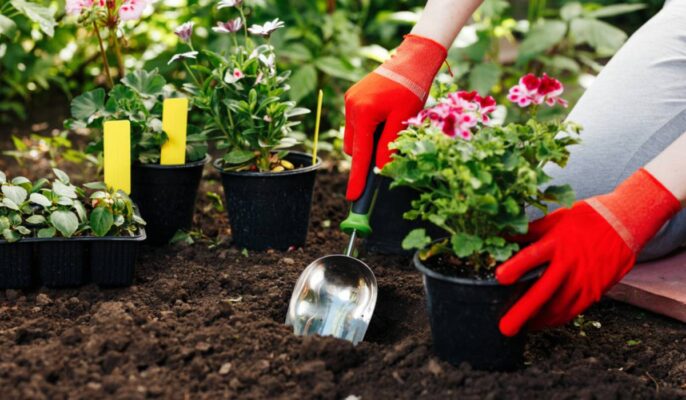Gardening is often seen as a peaceful pastime, a way to connect with nature and create a beautiful outdoor space. But beyond the basics of watering, weeding, and planting, there are many innovative and lesser-known strategies that can help your garden thrive DIY projects. Here are some unique gardening tips to elevate your green space and transform it into a flourishing oasis.
1. Plant Companion Crops for Natural Pest Control
Instead of reaching for chemical pesticides, consider planting companion crops that naturally repel pests. For example, marigolds can deter aphids and nematodes, while basil can help keep mosquitoes and flies at bay. Additionally, planting garlic among your vegetables can deter rabbits and deer. These natural allies help protect your garden while enhancing its biodiversity.
2. Use Coffee Grounds as a Soil Amendment
Coffee grounds are not just for your morning brew. They can be an excellent addition to your garden soil. Rich in nitrogen, coffee grounds can help improve soil structure, enhance drainage, and boost microbial activity. Simply sprinkle used grounds onto your soil or mix them into compost. They can also be used to deter ants and slugs, adding an extra layer of benefit.
3. Create a Rain Garden to Manage Water Flow
Rain gardens are designed to capture and manage stormwater runoff, reducing erosion and pollution while providing a habitat for wildlife. By strategically placing native plants in a low-lying area of your garden, you can create a natural filtration system that helps absorb excess water. This not only benefits the environment but also adds a beautiful and functional feature to your garden.
4. Try Sheet Mulching for Weed Control
Sheet mulching is a technique that involves layering organic materials to suppress weeds, retain moisture, and improve soil fertility. Start by laying down a thick layer of newspaper or cardboard over your garden bed. Add a layer of compost, followed by a thick layer of mulch (such as straw, leaves, or wood chips). This method not only prevents weeds from emerging but also enriches the soil as the layers decompose.
5. Incorporate Edible Landscaping
Combine beauty and utility by incorporating edible plants into your landscape design. Fruit trees, berry bushes, and herbs can serve as both ornamental and functional elements. Edible landscaping not only provides fresh produce but also enhances the visual appeal of your garden. Try planting edible flowers like nasturtiums or violets, which add color and flavor to salads.
6. Utilize Vertical Space with Green Walls
If you’re short on space, green walls are a fantastic solution. These vertical gardens can be installed on fences, walls, or even trellises. Use pots, planters, or specially designed green wall systems to grow herbs, vegetables, or ornamental plants. Vertical gardens maximize growing space and can transform even the smallest urban balcony into a lush, green retreat.
7. Implement Permaculture Principles
Permaculture is a sustainable design philosophy that mimics natural ecosystems to create self-sustaining gardens. By designing your garden with principles such as observing and interacting with nature, using renewable resources, and creating diverse plant communities, you can build a garden that thrives with minimal external input. Incorporate techniques like swales for water management and polyculture for pest control.
8. Try Self-Watering Containers for Low Maintenance
Self-watering containers are a great way to ensure your plants receive consistent moisture without the hassle of frequent watering. These containers have a built-in reservoir that allows plants to access water as needed. They are especially useful for growing vegetables or herbs in containers and can significantly reduce the time and effort required for maintenance.
9. Embrace the Power of Green Manures
Green manures, or cover crops, are plants grown specifically to improve soil health. Crops like clover, vetch, or rye can be planted in the off-season to fix nitrogen, enhance soil structure, and suppress weeds. After growing, these plants are tilled into the soil, where they decompose and contribute valuable nutrients. This practice not only enriches the soil but also promotes a healthier garden ecosystem.
10. Explore Biodegradable Pots and Planters
For eco-conscious gardeners, biodegradable pots and planters offer an environmentally friendly alternative to plastic. Made from materials such as coconut coir, bamboo, or recycled paper, these pots break down naturally over time, reducing waste and adding organic matter to the soil. They are particularly useful for starting seeds or transplanting young plants.
